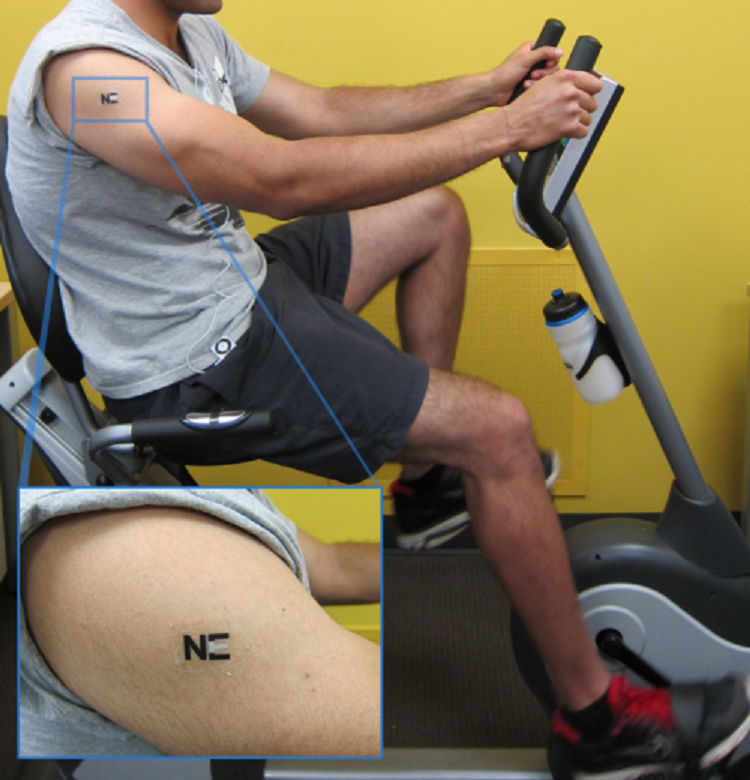
Headphones have become a very common sight in tracks and gyms alike. Folks can’t seem to fathom the idea of exercising without a steady stream of music in the background. Well, what if one had to earn the right to play music by exerting physical effort and sweating? Researchers from the University of California, San Diego have just unveiled at the American Chemical Society a new form of bio-battery powered by sweat, or rather, the lactate contained in the sweat. Synonymous with a carrot-on-a-stick, the new battery requires a steady flow of perspiration to energize electronics.
The use of “people power” or biofuel has inspired countless innovative approaches; some harness electric charges via piezoelectrics, whereas, others use blood to power implanted biofuel cells. The prototype developed by the UC San Diego-based researchers is the first to use lactate.
So how does it work? The researchers constructed the device by embedding a flexible lactate sensor into a temporary tattoo roughly the size of a postage stamp. Once in contact with the perspiration, the sensor extracts electrons from the lactate and generates a small resulting electrical current which powers a small battery. The maximum output in testing was 70 microwatts per square centimeter of skin – not enough to power larger devices like smart phones – but enough to power a simple digital watch.
“The current produced is not that high, but we are working on enhancing it so that eventually we could power some small electronic devices,” said researcher Wenzhao Jia in the press release.
Despite the tattoo’s application as a bio-battery, the research initially set out to devise a better way to measure lactate independent of blood work. During strenuous activity, the body activates a process called glycolysis in order to generate additional energy. Lactate, one of the byproducts of glycolysis, is measured by professional athletes as an indicator of performance. This process is inconvenient and intrusive, requiring a blood test. By embedding the lactate sensor in a tattoo, it’s now possible to measure the substance at any moment and without blood.
Incidentally, the researchers discovered that the enzyme in the lactate-measuring sensor simultaneously removes an electron from the substance; meaning, they inadvertently created a battery’s anode. Next, a cathode was added which contained a molecule that accepts the electron. The resulting contraption is what the UC nanoengineering professor who worked on the project, Joseph Wang, describes as “the first example of a biofuel cell that harvests energy from body fluid.”
The research behind the sensor-tattoo was published in 2013, but Wang and his team just released a new video showcasing the prototype in action.
Via Phys.org
Advertisement
Learn more about Electronic Products Magazine





